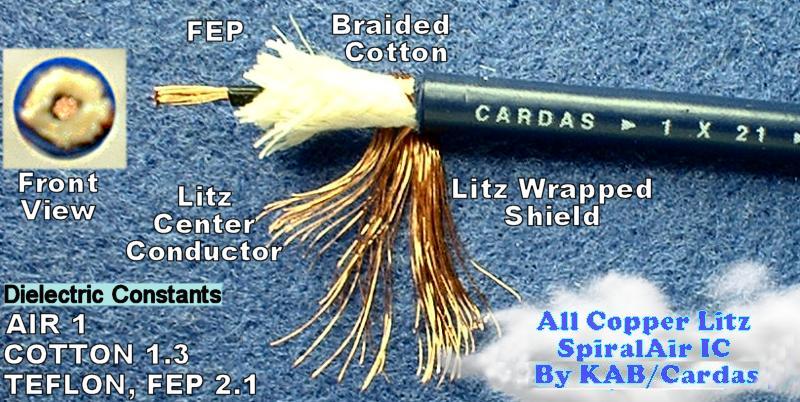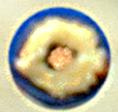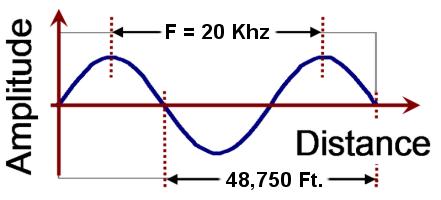of a Lifetime
|
Preserving
the Sounds of a Lifetime |
SpiralAir™KAB/Cardas/ETI All Litz Cable |
|||||
|
Before sound can float within your listening
space, it must first float through the space within your audio cables. And that
space is known as the dielectric. The quality of the dielectric is defined by a
number, 1 being the best. Air has a dielectric constant of 1. This is
important, because the closer we can get to air, the less colored the sound
will be. Dielectrics all posses a quality known as dielectric absorption. Dielectric absorption is proportionally related to the dielectric constant and acts like a distributed capacitor that charges and discharges energy randomly as the signal passes through the cable. Some say this effect can cause a loss of fine detail. And if that is true, then we have an obligation to address it. It gives the listener peace of mind; and in hi end audio, that is often just as important as getting it right technically. We call our new premium cable "SpiralAir" because the conductors are sandwiched between a thick layer of air filled cotton and the shield is a unique spiral design. Cotton has a dielectric constant of just 1.3 2/ and that's nearly perfect. Naturally, the center conductors
are Litz construction. Litz construction provides the most perfect path for AC
signals, everyone knows that. But the big news in our cable is the Litz Reussen
spiraling shield. This lets us exploit the simplest of cable constructions: the
coaxial design. Most cable companies abandoned the coaxial design in exchange
for twisted dual center conductors and a directional shield. Some even
abandoned the shield altogether. But there is a way to combine both of these
concepts into one better, simpler design. Lastly, let's talk about connectors. There is a lot of concern these days about brass. However most connectors use brass typically with a gold over nickel plating to enhance conductivity. KAB offers all of it's cables with a good quality brass and Teflon connector. However, I also recognize the concern for an all copper signal path, and that is why we also offer our cables terminated with ETI Bullet Gold over Tellurium copper connectors. the ETI connectors are very well accepted and have passed the test of time for a well designed all copper connector. Order 3 Ft KAB SpiralAir Interconnects/ETI Below. Notes 1/ http://www.allaboutcircuits.com/vol_2/chpt_14/5.html Sixth paragraph. 2/ Dielectric Constants |
 [KAB SpiraAir Interconnect with ETI Gold & Tellurium Copper Contacts] |
||
|
SPECIFICATIONS
|

By using 2 thick layers of braided cotton, our SpiralAir cable achieves a dielectric constant of 1.3. 2/ Air, with a DC of 1, is considered the best you can do. Proving that you can get mighty close to perfection at a price most everyone can afford. By using Litz conductors in the center and in the shield, we achieve the simplest cable design possible. The strands must be wound a specific way to equalize velocity in both directions, but we leave that know how to Cardas. But as you will learn if you keep reading, velocity plays only a small role in audio cable design. But spiraling the shield, now that is pure genius as it eliminates any possibility of proximity effect. I think most other cable makers out there avoid litz in the shield because, to be perfectly honest, its not easy to work with. It requires special handling and takes a bit longer to assemble. But the results are completely worth it. And hopefully, I have made it easy to understand why. Did I mention that a 20khz wave is nearly 50,000 Ft long? And a 20hz wave is 1000 time longer. Give that some thought, and then think about what is really going on in just 3 ft of wire! |
|
GREAT FEATURES
|
Wire
Primer Dielectric Constant: The dielectric is the insulator. Insulators are assigned a number that describes the reduction in wave propagation speed through it. For example, air is 1, Teflon is 2, thin silicone is 3, PVC is 3.4, water is 80. That is the dielectric constant. And it is only meaningful if both send and receive conductors are immersed in the same dielectric, and if the cable is long enough to contain a quarter wavelength. Many websites spin long yarns about how audio waves propagate through cables.And while it is true that higher dielectric constants will reduce the speed that a wave travels down the wire, it is important to consider that audio is measured in milliseconds, cable velocity effects are measured in nanoseconds. That's a ratio of a million to one! I found one reference that really nails this down: "If a “long” line is considered to be one at least 1/4 wave in length, you can see why all connecting lines in low frequency systems are assumed “short.” For a 60 Hz AC power system, power lines would have to exceed 775 miles in length before the effects of propagation time became significant. Cables connecting an audio amplifier to speakers would have to be over 2.3 miles in length before line reflections would significantly impact a 20 kHz audio signal! " 1/ Now imagine the impact 3 ft of interconnect has on velocity? 
Capacitance Dielectric Absorption Litz A word about wire plating Proximity Effect Propagation Delay
Prop delay is simply the speed at which an alternating current
travels down a wire. If the send and return wires are floating in air, the
speed is 3E8 m/s divided by 1 the dielectric constant of air. For Teflon the
speed down the wire would be 3E8m/s divided by 2.1 or 1.42E8 m/s. For KAB
SpiralAir Interconnects the speed is 3E8 m/s divided by 1.3 or 2.3E8 m/s. So
for pure specmanship, our cable is 65% faster than Teflon and only 24% shy of
light speed. Notes: 1/ http://www.allaboutcircuits.com/vol_2/chpt_14/5.html Sixth paragraph. 2/ Dielectric Constants |
||
KAB SpiralAir Interconnect
 |
KAB ELECTRO ACOUSTICS
P.O.BOX
2922
PLAINFIELD, NJ 07062, USA
PHONE 908-754-1479
FAX
908-222-3442